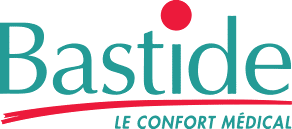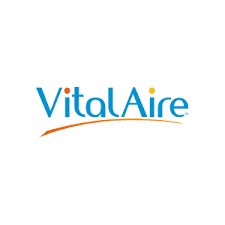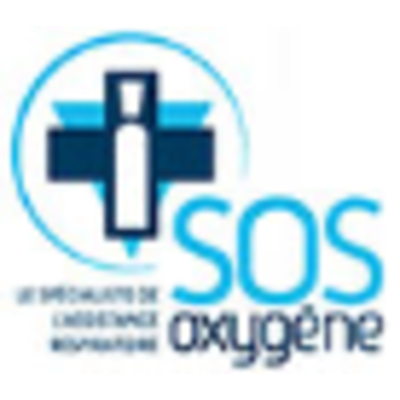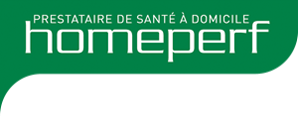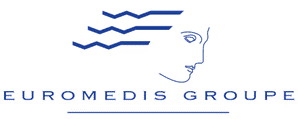Summary
The global home healthcare market, valued at $282 billion, is expected to grow at an average annual rate of 7.9% to 2027, driven by an aging population and improved access to healthcare services worldwide. In France, the home medical assistance market was expected to grow strongly, with the size of the market reaching 4 billion euros according to the Fédération des prestataires de services à domicile (PSAD). During the Covid-19 crisis in 2020, home healthcare providers played a key role, caring for around 30,000 Covid-19 patients and investing 8 million euros in new oxygen concentrators, despite an expected loss of sales of 200 million euros due to the postponement of treatments for chronic illnesses. Demand is driven by an aging population, with an estimated 2 million people a year using home healthcare services, 50% of whom suffer from sleep apnea and 19% of whom are elderly dependents. The need for home medical services is set to increase further with technological advances in the medical field and the growing number of patients with chronic illnesses, which tend to increase with age.
Demand trends in the French homecare market
As France's population ages and the prevalence of chronic illness increases, demand for home medical assistance services is growing significantly. These services are particularly essential for people suffering from a variety of health problems, including chronic respiratory conditions, sleep apnea, diabetes, Parkinson's disease, and other pathologies requiring continuous medical monitoring. The aging of the population is a key driver of market demand, with the number of people aged over 75 expected to rise to between 10 and 15 million by 2060.
In addition, a significant percentage of this population, notably more than half of those over 85, suffer from multiple chronic illnesses requiring constant care. The result is a growing need for medical services that can be provided in the comfort of the home. Dependence on home medical assistance is further reinforced by the fact that many elderly people prefer to avoid institutional care.
Surveys indicate that two-thirds of the French population would prefer not to reside in care facilities, underlining the importance of homecare services in future healthcare planning. What's more, given the constant technological advances in the medical field and the expansion of illnesses that can now be treated at home, the number of patients benefiting from home medical assistance is set to rise by 5-7% a year. These advances have made it possible to effectively treat at home a greater number of conditions, such as cystic fibrosis and certain cancers, which previously required hospital stays. When it comes to chronic and long-term health problems, there is a marked disparity according to socio-economic status and age.
Around 35% to 40% of people from the middle and upper classes claim to suffer from chronic health problems, compared with a higher percentage, ranging from 45% to 50%, among those from the working class. The contrast is even more marked when age is taken into account, with 65-70% of people over 70 claiming to suffer from a chronic illness, compared with 15-20% of those under 30. The homecare market is therefore shaped by a variety of factors, principally the aging of the population and the increasing incidence of chronic illness, both of which are fuelling the growing demand for homecare services in France. This trend is set to continue in the years ahead, further shaping the country's healthcare delivery landscape.
Key players in the French homecare market
The French homecare market is a dynamic sector, characterized by the presence of several key players who have carved out a significant position for themselves through strategic actions, mergers and acquisitions, and the development of innovative services. These organizations meet a range of medical needs, from respiratory assistance to nutrition-perfusion, and play a crucial role in facilitating home care for patients suffering from chronic illnesses, disabilities and the elderly.
- Air Liquide Santé: Positioned as a formidable competitor in the market, Air Liquide Santé has made strategic acquisitions, such as Sleep & Health, which specializes in sleep apnea, and Megamed, which focuses on respiratory insufficiency. In addition, Air Liquide Santé is exploiting the potential of technology with initiatives such as "Chronic care connect", a system designed for remote monitoring and support of patients suffering from chronic diseases.
- Groupe Bastide: Groupe Bastide is a multi-faceted company in the sector, recognized for its comprehensive range of services beyond equipment rental and sales. The group has focused its strategy on developing franchised facilities as well as optimizing the network of existing brands, with the aim of strengthening its market share and brand value. In particular, its efforts are focused on expanding the number and variety of services offered, such as telemedicine and therapeutic education.
- Orkyn': A subsidiary of Air Liquide Santé, Orkyn' represents a significant market force, particularly in the field of respiratory therapy and related medical equipment. Drawing on the formidable support of its parent company, Orkyn' has played a key role in bringing essential medical equipment and services into patients' homes.
- Elivie: Another notable player in the sector, Elivie has expanded its market presence through partnerships with clinics, healthcare institutions and nursing home managers. These collaborations have enabled Elivie to enhance its service offerings, reach a broader patient base and align itself with the sector's move towards value-added partnerships.
- SOS Oxygène: SOS Oxygène focuses on the needs of patients requiring respiratory assistance and oxygen therapy. As a specialized service provider, SOS Oxygen contributes to the market with a targeted approach, addressing the vital needs of a specific segment of patients suffering from respiratory disorders.
- Proximed: Known for its national presence and commitment to localized care, Proximed operates on a franchise model, ensuring that medical services are accessible nationwide. Its strategy emphasizes the importance of local services and support for patients at home.
to understand this market
Detailed content
 Inforamtion
Inforamtion
- Number of pages : 30 pages
- Format : Digital and PDF versions
- Last update : 01/06/2021
 Summary and extracts
Summary and extracts
1 Market overview
1.1 Definition and scope of the study
Medical assistance at home is a practice of allowing patients to receive medical care in their own homes. The duration and therapeutic conditions of home care are defined by a health professional. This type of service is intended for people who are dependent, disabled or suffering from certain pathologies or health problems.
Home assistance generally requires the use of medical equipment, but differs from HAH (hospitalization at home) in that it involves less intensive care. The illnesses treated include chronic illnesses requiring recurrent treatment (chronic obstructive pulmonary disease, sleep apnoea, diabetes, Parkinson's disease, etc.).
The French home medical assistance market is growing, particularly due to the ageing of the population, which favours the appearance of numerous private structures. One of the major opportunities of the eastern sector technological progress (remote monitoring, connected medical equipment, etc.) which promises to be a growth lever in the years to come.
There is a great diversity of players on the market such as SOS Oxygen, Bastide Group or Air Liquide via various subsidiaries such as Orkyn' or LVL Medical. The market has undergone significant consolidation in recent years, which may continue in the future.
The staffing needs in this sector of the home health care providers (PSAD) are growing, with an average annual increase of 6% in recent years.
During the Covid-19 crisis, HHCP players were important in treating patients at home or in nursing homes, with an investment of €8 million in new concentrators in 2020. Nevertheless, the postponement of the treatment of certain chronic patients has affected the activity of the players.
1.2 A growing global market
The home care market is a growing market globally. The market is estimated to be worth $*** billion globally in **** and is expected to grow at an average rate of *.*% per annum to ****.
The ageing of the population is a major factor in this growth, as is the access of more and ...
1.3 A dynamic French market
In ****, Les Echos estimated in **** the market to be worth €*.* billion, with an average annual growth rate of *% in recent years.
In ****, according to the Federation of home care providers (***), the market size is to be €* billion, proof of the strong growth of the sector in recent years.
The Federation also ...
1.5 The ambivalent impact of the Covid-19 crisis
The positive impact related to the management of Covid-** patients:
From the beginning of the health crisis to November ****, **,*** Covid-** patients were managed by PSAD. The home health care providers also helped the nursing homes with their services.
Players have also sought to integrate remote monitoring processes with connected medical ...
2 Analysis of the demand
2.1 Patients managed by home health care
Approximately * million people a year use the services of the home health care providers (***).
The reasons for using PSAD services are diverse, but dominated by a few types of pathologies:
**% of patients have sleep apnoea ** % are dependent elderly people (***) *% are patients with disabilities
Patients treated by home medical assistance by ...
2.2 The ageing of the French population and dependent persons
A structural dynamic: the ageing of the population
The first reason for the good health of the home health care sector is the ageing of the French population.
Indeed, life expectancy in France in **** was **.* years compared to ** years in ****, an increase of about *% in ** years.
In ****, ** million people are expected ...
2.3 Chronic diseases or health problems in France
Chronic or long-lasting diseases or health problems develop mainly in the oldest people and among people in the most precarious living conditions.
Thus, on average, **.*% of the French middle and upper classes have chronic or long-lasting illnesses or health problems, in comparison to the **.*% of French people from the more working ...
2.4 French people's perception of home health care providers
Harris-interactive conducted a survey for Orkyn' in **** among *,*** people in October **** using the quota method in order to perceive the French people's knowledge and vision of home health care providers.
Confused knowledge of the areas and diseases covered by home health care providers:
The survey below highlights that the French do ...
2.5 Focus on sleep apnoea: the largest market segment
Sleep apnoea is also called obstructive sleep apnoea-hypopnea syndrome (***) breathing during sleep, depending on Ameli.
This causes a lack of oxygen, which causes the person to wake up to catch their breath. Sleep is then no longer restful, which can cause significant health problems.
Approximately *% of French people suffer from OSA, ...
3 Market structure
3.1 Forces at work
Home health care providers (***).
Among the home health care providers that have received the label are:
Bastide Orkyn AADAIRC Agir à domicile Alliance Soins Proximed Santélys Santélynes
They offer a wider range of services than the rental or purchase of medical equipment. They provide personalized support, taking into account the ...
3.2 Stakeholder strategy
The following are some (***) examples of competitive strategies pursued by the players.
M&A: to enter new markets (***) or to strengthen the treatment of a disease
In ****, Air Liquide (***) while developing "Chronic care connect ": a system for remote home medical monitoring and support for patients suffering from chronic diseases.
Partnership with ...
3.3 ADSP Value Chain
The various PSAD stakeholders
The chain of stakeholders involved in PSAD can vary greatly in size and nature.
In the treatment of complex chronic diseases such as cancer, the chain of medical actors involved in the PSAD can be very important prescribing oncologists, coordinating physicians, pharmacists from in-house pharmacies, health managers, ...
3.4 Employment dynamics and structure in the sector
According to Fedepsad, there are more than **,*** employees in the PSAD sector, of which approximately **% are health professionals, divided between:
Pharmacists Dieticians / nutritionists Nurses Masseurs - physiotherapists
The need for personnel is growing, especially for health professionals, according to the PSAD federation. This is *% per year on average.
These employees are ...
3.5 Home help: evolution of companies and employees in the sector
Home help is not part of the home health care providers sector, but is a complementary activity that some companies in the sector can (***) provided to the elderly and disabled. It also includes assistance in collective accommodation and in rural areas. Both companies and employees have seen a sharp increase in ...
4 Analysis of the offer
4.1 Pricing according to the type of structure and care
The French government is banking on the development of the home medical assistance sector thanks to the reimbursement of medical services included in the LPPR list (***) and thanks to the aid offered in certain cases.
The objective of the State, behind the development of this sector, is to fight against overcrowding ...
4.2 Services and care
The various business segments of the home health care providers can be grouped into four categories below.
Home support:
The market for home care services is therefore more essential than ever to guarantee a comfortable life and medical assistance to dependent people. The maintenance of the person at home is done ...
4.3 A market driven by technological innovation
E-health and technological progress as growth drivers
The e-health sector has been very dynamic in recent years. There is a **% growth between **** and **** worldwide, with more numerous fundraising events. According to a study by the start-up Health, all the young players in the sector had raised over $** billion in *** fundraisings in ...
5 Regulation
5.1 Regulations in force
Article L.***-* of the Social Security Code defines the List of Reimbursable Products and Services (***). To be reimbursed by social security, a medical service must be considered essential in the therapeutic process. The registration of a service on the LPPR must have a proven therapeutic interest and be approved by ...
6 Positioning of the actors
6.1 Segmentation
- Isis Medical
- Orkyn (Air liquide)
- Bastide Groupe
- LVL Medical (Air liquide)
- Vitalaire (AIR Liquide)
- SOS Oxygène
- Homeperf
- Bestens umsorgt (KORIAN Group)
- Laboratoires Euromedis
- Medic Alliance
- e-device
- Cap Vital Santé
- La vitrine médicale
- MyMobility
- Air Liquide
- Linde
- Vitame
- DomusVi Domicile
- Proximed Services
- Vitalliance
- Domaliance
 List of charts
List of charts
- Size of the home health care market
- Sales of home healthcare service providers
- Impact of the Covid-19 crisis on PSAD
- Patients treated by home medical assistance by type of assistance
- Change in the proportion of French people aged over 60
All our studies are available online in PDF format
Take a look at an example of our research on another market!
Latest news
Companies quoted in this study
This study contains a complete overview of the companies in the market, with the latest figures and news for each company. :
 Choosing this study means :
Choosing this study means :
Access to more than 35 hours of work
Our studies are the result of over 35 hours of research and analysis. Using our studies allows you to devote more time and added value to your projects.
Benefit from 6 years' experience and over 1,500 industry reports already produced
Our expertise enables us to produce comprehensive studies in all sectors, including niche and emerging markets.
Our know-how and methodology enable us to produce reports that offer unique value for money.
Access to several thousand articles and paid-for data
Businesscoot has access to all the paid economic press as well as exclusive databases to carry out its market research (over 30,000 articles and private sources).
To enhance our research, our analysts also use web indicators (semrush, trends, etc.) to identify market trends and company strategies. (Consult our paying sources)
Guaranteed support after your purchase
A team dedicated to after-sales service, to guarantee you a high level of satisfaction. +44 238 097 0676
A digital format designed for our users
Not only do you have access to a PDF, but also to a digital version designed for our customers. This version gives you access to sources, data in Excel format and graphics. The content of the study can therefore be easily retrieved and adapted for your specific needs.
 Our offers :
Our offers :
the home medical assistance market | France
- What are the figures on the size and growth of the market?
- What is driving the growth of the market and its evolution?
- What is the positioning of companies in the value chain?
- Data from several dozen databases
Pack 5 études (-15%) France
- 5 études au prix de 75,6€HT par étude à choisir parmi nos 800 titres sur le catalogue France pendant 12 mois
- Conservez -15% sur les études supplémentaires achetées
- Choisissez le remboursement des crédits non consommés au terme des 12 mois (durée du pack)
Consultez les conditions du pack et de remboursement des crédits non consommés.





 Siemens Energy and Air Liquide inaugurate their gigafactory to get green hydrogen off the ground - 09/11/2023
Siemens Energy and Air Liquide inaugurate their gigafactory to get green hydrogen off the ground - 09/11/2023
 My Mobility, a small business that transports disabled children - 26/10/2022
My Mobility, a small business that transports disabled children - 26/10/2022


